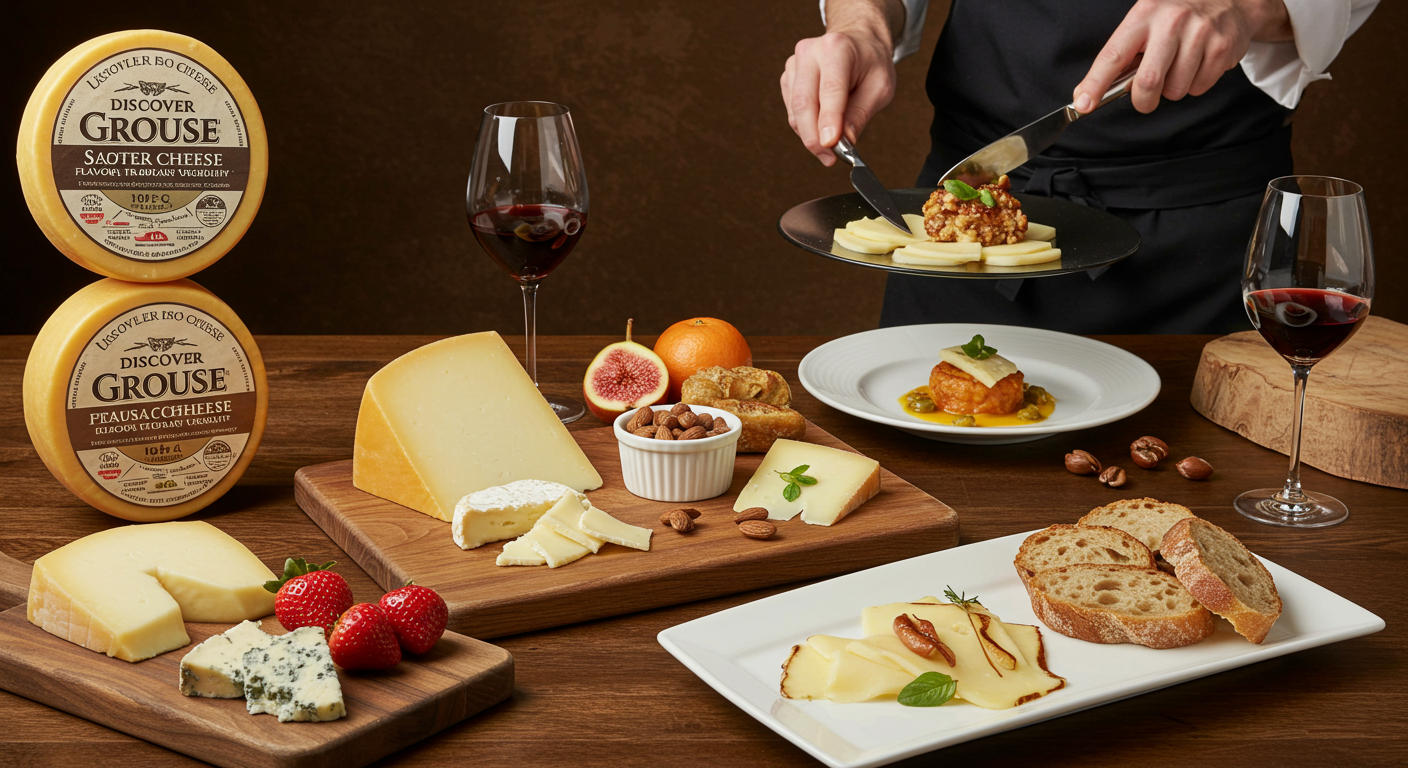Cheese enthusiasts constantly seek unique flavors that tell a story of culture, craftsmanship, and culinary artistry. Grouse cheese, although not widely known, is a niche variety gaining recognition for its distinct taste and traditional preparation methods. This cheese offers a rustic, earthy profile, often enjoyed by gourmet chefs and foodies who appreciate artisanal dairy products. Let’s explore what makes Grouses cheese special, how it’s produced, and why it deserves a place in your kitchen.
What Is Grouse Cheese?
Grouse cheese is a semi-hard to hard cheese made traditionally in rural European and North American regions. It often features a creamy interior with a slightly crumbly texture and a pronounced, gamey flavor. Unlike mass-produced cheeses, Grouses cheese typically comes from small farms where the cheese is aged naturally and crafted in small batches.
Interestingly, the name “Grouses cheese” does not refer to an ingredient derived from the grouse bird. Instead, it may originate from regions where grouse hunting is common or symbolic. The cheese complements wild game dishes, hence the association.
Origin and History
While Grouse cheese does not belong to a specific Protected Designation of Origin (PDO), its roots lie in countryside dairy traditions. Small dairies and homesteads in places like Scotland, Northern England, or parts of Canada often made cheeses resembling Grouse cheese. These locations are also renowned for wild grouse hunting, which helped the cheese gain its name.
Historically, local cheesemakers aged the cheese in cool, damp cellars, developing a robust rind and deep, earthy notes. These cheeses were staples during colder months and often accompanied roasted meats, root vegetables, and hearty breads.
Ingredients and Production Process
Traditional Grouses cheese requires only a few ingredients—milk, rennet, cultures, and salt—but the technique makes all the difference. Let’s explore the process step by step:
Milk Selection
Most Grouse cheese is made from raw or lightly pasteurized cow’s milk. In some artisanal versions, goat or sheep milk may be blended in to enhance complexity.
Curdling and Cutting
After warming the milk, cheesemakers add rennet to induce curdling. Once curds form, they are cut into small pieces to release whey. The size of the curd pieces influences the final texture—smaller curds produce a firmer cheese.
Draining and Pressing
Next, curds are drained of whey and pressed into molds. This stage compresses the cheese, giving it a dense structure and reducing moisture.
Salting and Aging
After removing from the molds, the cheese is salted—either dry-salted or brined—and then aged for several weeks to months. The aging period is crucial, allowing the cheese to develop its signature flavor and aroma.
Taste Profile and Texture
Grouses cheese has a bold, slightly tangy flavor with nutty and mushroom-like undertones. It may feature a natural rind that adds a layer of earthiness. The interior ranges from creamy near the rind to firm and slightly granular at the center.
As it ages, the flavor becomes more pronounced, making it a perfect pairing with robust wines, smoked meats, or wild mushroom dishes.
Nutritional Benefits
While Grouse cheese is a gourmet treat, it also provides nutritional value. Let’s break down its key benefits:
-
Protein-Rich: Grouse cheese is packed with high-quality protein, essential for muscle repair and energy.
-
Calcium Source: It offers a good dose of calcium, promoting healthy bones and teeth.
-
Probiotics: If unpasteurized, the cheese may contain beneficial bacteria that support gut health.
-
Healthy Fats: Though high in fat, Grouses cheese contains conjugated linoleic acid (CLA), known for its potential metabolic benefits.
Moderation is key, as it is also high in sodium and saturated fats.
Culinary Uses
Grouse cheese’s complex flavor makes it versatile in both traditional and modern dishes. Here are a few ways to enjoy it:
Charcuterie Boards
Serve Grouse cheese alongside cured meats, olives, dried fruits, and crusty bread for a sophisticated appetizer.
Melted Over Game Meats
This cheese pairs exceptionally well with roasted duck, venison, or grouse, enhancing the savory depth.
Gourmet Grilled Cheese
Elevate your grilled cheese sandwich by using slices of Grouses cheese, perhaps with caramelized onions and rye bread.
Baked Dishes
Shred Grouse cheese into casseroles, gratins, or quiches. It melts beautifully and adds rich, hearty flavor.
Pasta and Risotto
Grate a bit of Grouses cheese over creamy pasta or risotto dishes for an earthy finish.
Pairing Recommendations
Because of its intense flavor, Grouse cheese pairs best with bold accompaniments. Consider the following pairings:
-
Wines: Try Cabernet Sauvignon, Syrah, or a full-bodied Chardonnay.
-
Beers: Opt for Belgian ales, porters, or strong IPAs.
-
Fruits: Figs, pears, and apples balance the saltiness with natural sweetness.
-
Nuts: Walnuts and almonds enhance the cheese’s nuttiness.
-
Breads: Rye, sourdough, or multigrain breads complement its texture and depth.
How to Store Grouse Cheese
Proper storage is essential to preserve the integrity of Grouses cheese. Here are some tips:
-
Wrap it right: Use cheese paper or wax paper instead of plastic to allow it to breathe.
-
Keep it cool: Store in the vegetable drawer or cheese compartment of your fridge.
-
Use a cheese box: This creates a micro-climate, extending freshness.
-
Avoid freezing: Freezing alters the texture and degrades the taste.
Once opened, consume within 7–10 days for best flavor.
Where to Buy Grouse Cheese
Due to its artisanal nature, Grouse cheese is often found at:
-
Specialty cheese shops
-
Farmer’s markets
-
Online gourmet retailers
-
High-end grocery stores
When buying online, always ensure the seller follows proper refrigeration during shipping. Read reviews and inquire about the aging duration and ingredients if not clearly listed.
Is Grouse Cheese Suitable for Vegetarians?
Most traditional Grouse cheese uses animal rennet, which may not suit vegetarians. However, many artisanal producers now offer vegetarian rennet alternatives. Always check the label or ask the cheesemaker if you’re unsure.
Sustainability and Ethical Production
Many Grouses cheese producers focus on ethical and sustainable practices. Small farms emphasize:
-
Pasture-fed cows or goats
-
No synthetic additives
-
Minimal packaging
-
Fair wages for labor
Supporting these artisans not only brings better cheese to your table but also strengthens local economies and promotes environmentally friendly farming.
Conclusion
Grouse cheese stands as a symbol of artisanal excellence, offering bold flavors rooted in tradition. Its rustic charm, complex profile, and versatility in cooking make it a hidden gem for culinary enthusiasts. Whether paired with wild game, served on a cheese board, or grated into your favorite dish, Grouses cheese offers an unforgettable experience. Seek it out at specialty shops, savor it with a glass of wine, and share the flavor of Grouse cheese with those who appreciate fine food.

